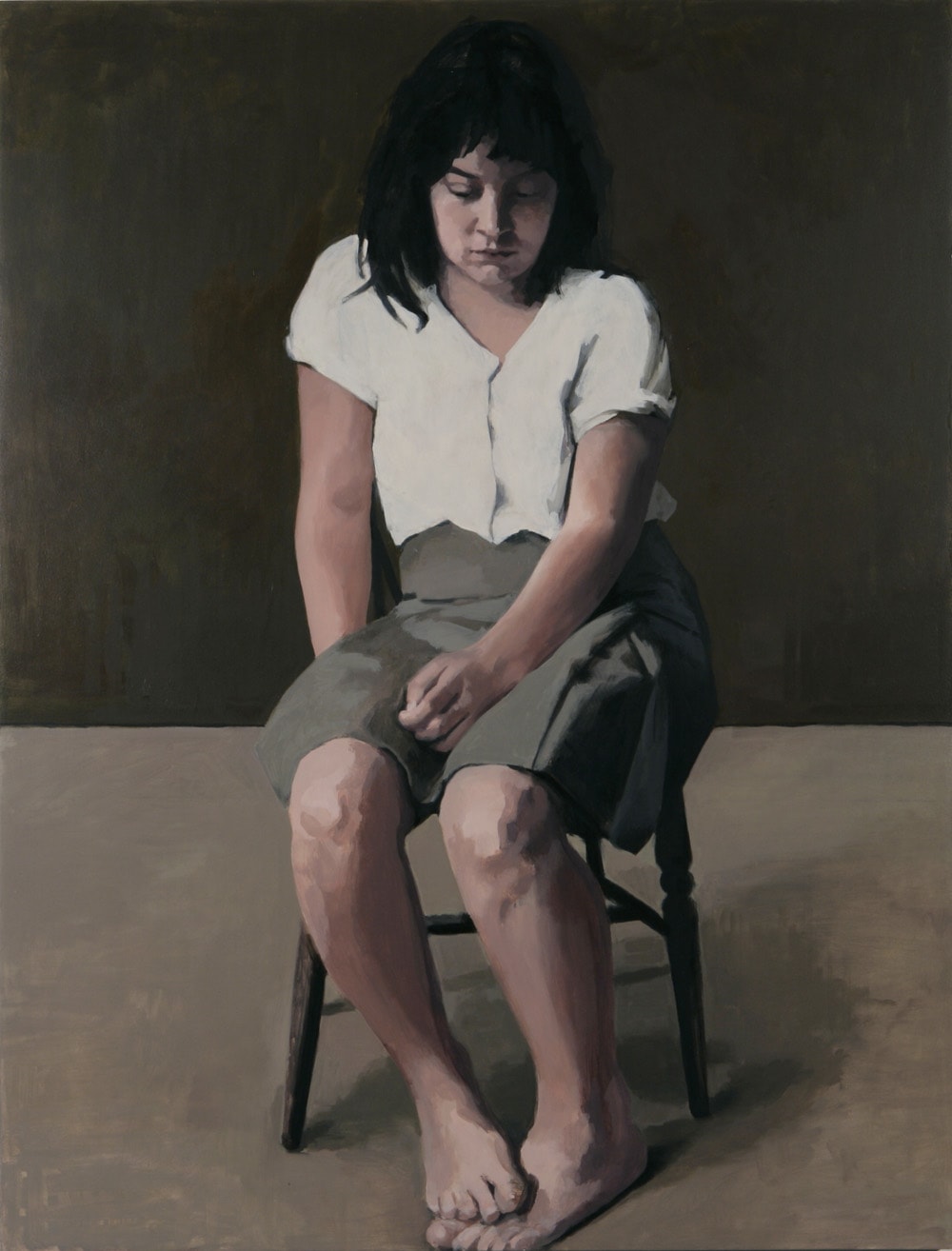
Overview
These paintings are portraits of a moment, one that has become lost in time. Her subject is the photograph and not the person.
Claerwen James's recent work stands at a deliberate distance to the moments it explores. There is a watchfulness about the figures as they stare out of the picture with a muted privacy. They invite intimacy yet remain distant. Her work has developed and deepened since her first 'sell-out' solo show in 2006 and demonstrates a quiet confidence: more lyrical, more beguiling, less graphic, less confrontational.
Most of the images originated as photographs: some scavenged, some taken by the artist, who believes that the awkwardness of the photographic moment is crucial to the painful, elegiac quality of the paintings. "the subjects are taken not from life, but, like icons, from the image of a life." (Allison Pearson, 2004). The effect is to make these portraits solitary and withdrawn. James is interested in precisely the qualities that painting from life loses. She paints the moments in the life of faces that the camera captures and fixes. These paintings are portraits of a moment, one that has become lost in time. Her subject is the photograph and not the person.
James's subjects have developed an intensity of character and engage the viewer in a way that traditional portraiture rarely achieves. Cate Blanchett, one of her adult subjects, is seen as a mother rather than a film star in a return to inner privacy, which is James' continuing theme. Her recent work has found a greater intensity and darkness, both in palette and content, although it retains a tenderness and compassion that are becoming the hallmark of her work.
Born in 1970, Claerwen obtained an honours degree in Zoology at Oxford and a Doctorate in Cell Biology from London University. She then studied painting at the Slade School of Art, and graduated in 2003 with the Melvill Nettleship Prize, which was held previously by, amongst others, Gwen John. She was introduced to Flowers Gallery in 2004 through the annual 'Artist of the Day' exhibition, whereby established artists, in this case Andrew Stahl, are invited to select one aspiring artist to show at Flowers for a single day in a series of exhibitions over two weeks.
These paintings are portraits of a moment, one that has become lost in time. Her subject is the photograph and not the person.